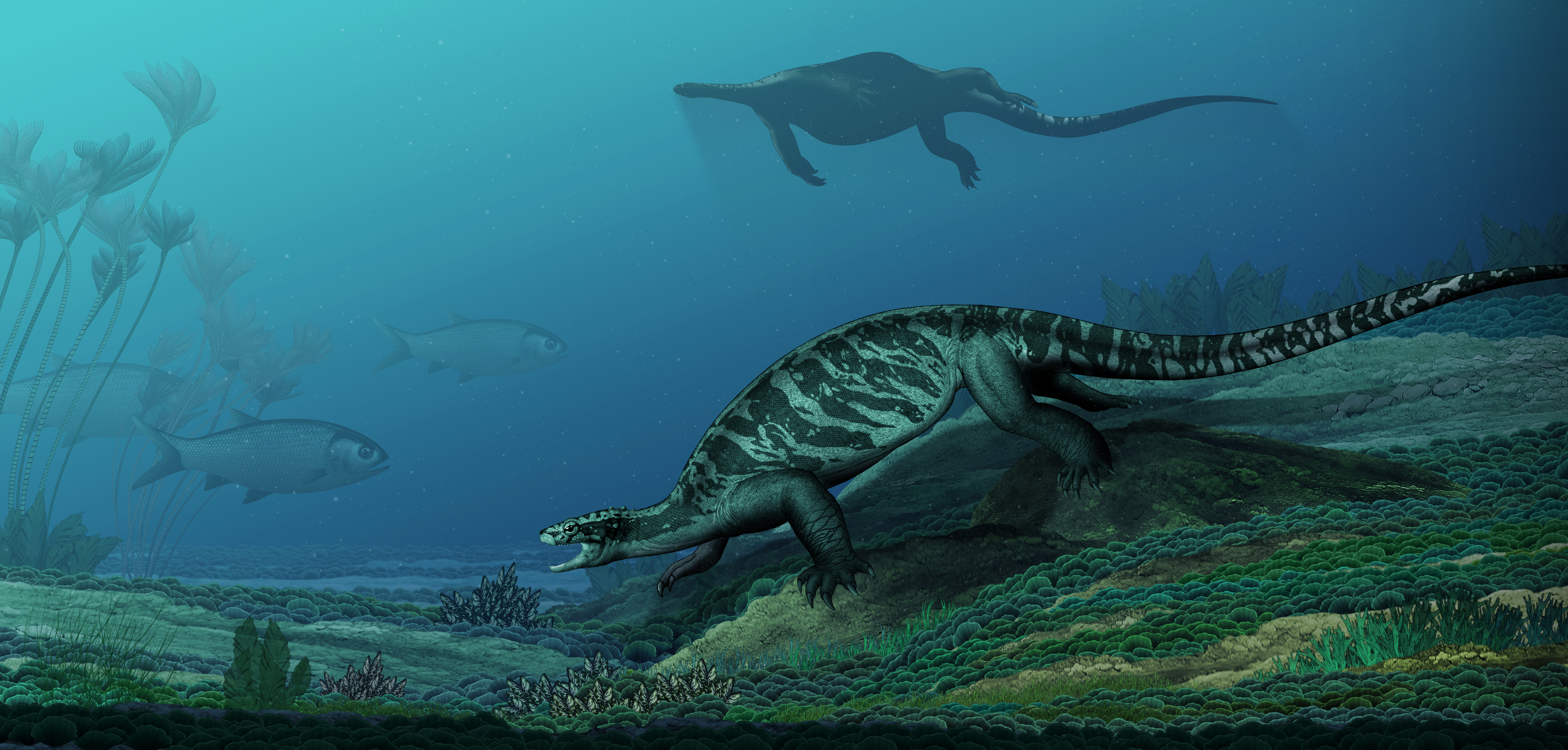Scientists have discovered a species of ancient giant turtle that had no shell and roamed Earth’s oceans 228 million years ago.
Named Eorhynchochelys sinensi for ‘first turtle with a beak’, it was bigger than the leatherback – the biggest sea turtle alive today.

Scientists have discovered a species of ancient giant turtle that had no shell and roamed Earth’s oceans 228 million years ago. The unusual reptile was dug up in China and had a unique beak and a flat, ‘disc-like’ body
Measuring 8ft 2in in length (2.5 metres) the giant marine reptile lived during the Triassic period at a time when the earliest dinosaurs were diverging into a range of species that took over the Earth.
Co-author Dr Olivier Rieppel, paleontologist at Chicago’s Field Museum, described it as ‘very large.’

He said: ‘This creature was over six feet long. It had a strange disc-like body and a long tail – and the anterior part of its jaws developed into this strange beak.
This provided the scientific community with a perfect example of an intermediate fossil that bridged the gap between the stages of evolution.
The Eorhynchochelys specimen was collected from sediments in Guizhou in south western China about 25 feet (7.5 metres) below where Odontochelys was found – indicating its older age.

The turtle is called Eorhynchochelys sinensi for ‘first turtle with a beak’, and measures more than eight foot long – bigger than the leatherback turtle which is the biggest sea turtle living today
The unique combination of the unusual beak and the lack of a shell sheds fresh light on the evolution of modern-day sea turtles.
Biologists have argued over the murky origins of turtles for over a century as viable specimens became hard to find.

Dr Rieppel said: ‘The origin of turtles has been an unsolved problem in palaeontology for many decades.
‘Now with Eorhynchochelys, how turtles evolved has become a lot clearer.’
The fact that this turtle species developed a beak before others did but didn’t have a shell is evidence of a phenomenon known as ‘mosaic evolution.’

This is the idea traits can evolve independently from each other and at a different rate and is the reason not every ancestral species has the same morphological traits.
Modern turtles have both shells and beaks – but the path evolution took to get there wasn’t a straight line.
Instead some turtle relatives got partial shells while others got beaks.

Eventually, through natural selection, the genetic mutations responsible for these characteristics became widespread and occurred in the same animal.
Co-author Dr Nick Fraser, a specialist in vertebrate palaeontology at National Museums Scotland in Edinburgh, said: ‘This impressively large fossil is a very exciting discovery giving us another piece in the puzzle of turtle evolution.
‘It shows early turtle evolution was not a straightforward, step-by-step accumulation of unique traits but was a much more complex series of events that we are only just beginning to unravel.’

The Eorhynchochelys specimen was collected from sediments in Guizhou in south western China. The unique combination of the unusual beak and the lack of a shell sheds fresh light on the evolution of modern-day sea turtles

Modern turtles have both shells and beaks – but the path evolution took to get there wasn’t a straight line. Instead some turtle relatives got partial shells while others got beaks
Fine details in the skull of Eorhynchochelys solved another mystery – showing turtles are related to modern lizards and snakes.
For years scientists weren’t sure if their ancestors were part of the same reptile group – known collectively as diapsids.

It was thought they were anapsids, a similar group of primitive reptiles that lack these openings in the skull but the new species has disproved this idea.
Dr Rieppel said: ‘With Eorhynchochelys’s diapsid skull, we know that turtles are not related to the early anapsid reptiles, but are instead related to evolutionarily more advanced diapsid reptiles.
‘This is cemented, the debate is over.’
The findings published in Nature will change how scientists think about this branch of animals.
Dr Rieppel said: ‘I was surprised myself. Eorhynchochelys makes the turtle family tree make sense.
‘Until I saw this fossil, I didn’t buy some of its relatives as turtles. Now, I do.’